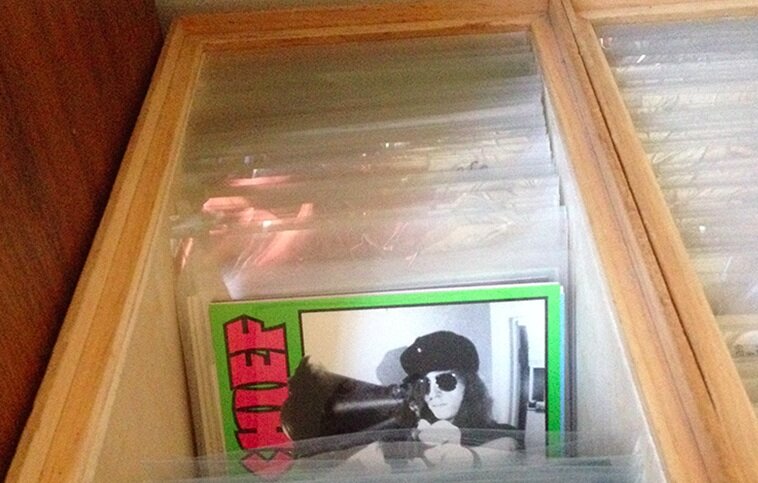Craig Spalter, the eBay collector of punk rock vinyl and posters that we previously profiled, has a few tricks for buying and selling music memorabilia. For those serious about getting into the world of rare collectibles, whether you’re starting out buying $15 posters or looking to trade $30,000 Beatles records, Spalter’s tips are a good place to start.
“Like anything you have to do the research so you don’t’ get ripped off,” he said.
Spalter recommends three particular websites that help him turn up gems and figure out how much they’re worth. Here’s one of his typical buying and research scenarios:
“I’ll usually start with eBay and look around for cool records with specific keyword searches on artists and albums,” explained Spalter. “Sometimes I’ll see a $5 record on eBay and start to wonder if it could be similar to something I’ve seen sell for $100.” Spalter heads over to a site called Discogs to find other records like it and peek at their selling prices.
This autographed Radio Birdman album is listed at $283.17 on the Discogs site, for example. The site has a giant database of information on record and poster condition (with similar acronyms as eBay for specific quality indicators). Collectors use it to research specific items, show off their collections and sell some things, too. Discogs includes information about “matrix markings” or “matrix numbers” that can show collectors whether or not a record is considered a first pressing (although there are some inconsistencies with how collectors interpret these numbers). The matrix numbers can also indicate second pressings when a significant change occurs on an album, like a change in song order on a particular side of the album, or a variation on the cover or label text.
The site morphed into a collections site and finally a retail site. Spalter uses it to compare quality indicators, matrix numbers and pricing to what he sees on eBay. “You can usually find anything that sold for more than $20 on Discogs,” he said.
He also visits a site called PopSike to check high, low and median pricing data on completed sales. The PopSike database scrubs eBay data to come up with their analytics. “You can track price fluctuations there,” said Spalter. “It’s strictly a data site. Discogs helps with rare records. Between the two, you can get a good handle on what a record should sell for.”
To automate his search methods, Spalter uses custom search email notifications from within eBay to see pricing and listings based on keywords he’s set up. “I’ll also set up searches for stuff in my collection to see what things are going for,” he said.
All these sites, eBay included, allow collectors to track sales, trends and rare collectibles that sell for just a couple of hundred bucks, like the items Spalter collects, or ones that sell in the tens of thousands of dollars, like rare Beatles and Rolling Stones records.
Finally, you can read more about vinyl collecting here: Vinyl Record Sales are Flourishing on eBay

